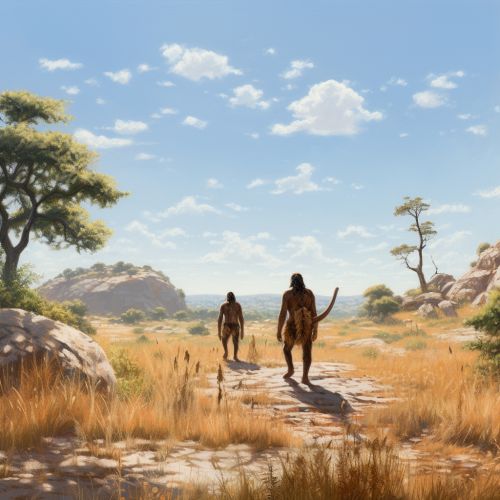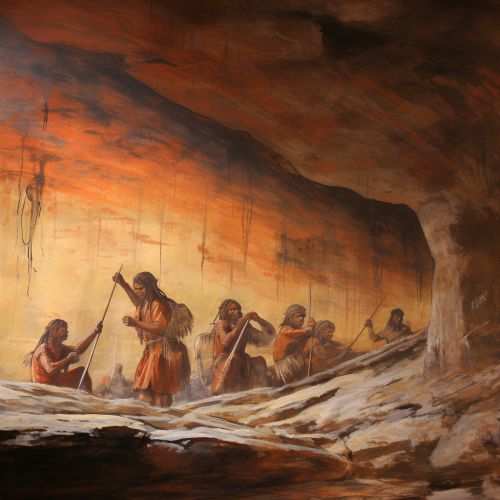The Science of Human Evolution
Introduction
Human evolution is the lengthy process of change by which people originated from apelike ancestors. Scientific evidence shows that the physical and behavioral traits shared by all people originated from apelike ancestors and evolved over a period of approximately six million years. One of the earliest defining human traits, bipedalism -- the ability to walk on two legs -- evolved over 4 million years ago. Other important human characteristics -- such as a large and complex brain, the ability to make and use tools, and the capacity for language -- developed more recently. Many advanced traits -- including complex symbolic expression, art, and elaborate cultural diversity -- emerged mainly during the past 100,000 years.
Understanding Human Evolution
Human evolution is the biological and cultural development of humans. A human is any member of the species Homo sapiens, meaning 'wise man'. Since at least the Upper Paleolithic era, some 40,000 years ago, every human society has devised a creation myth to explain how humans came to be. Creation myths are usually part of the religions and faiths of societies. They are passed down from generation to generation. More on Creation Myths


The Process of Human Evolution
The process of human evolution has been slow and gradual, and it is not a process that we can observe in real time. Instead, we know about it through the fossil record, the DNA record, and the cultural record. The fossil record shows that human ancestors became increasingly different from other primates about seven million years ago. The DNA record shows that our species, Homo sapiens, is closely related to the other species of great apes, especially chimpanzees and bonobos. The cultural record shows that our ancestors developed increasingly complex tools and behaviors.
Early Human Ancestors
Our early ancestors, known as hominins, diverged from other primates in Africa between six and seven million years ago. The earliest hominins, such as Sahelanthropus tchadensis, were more ape-like than human. They had small brains, and their hands and feet were adapted for climbing trees. However, they also had some human-like features. For example, they walked on two legs, a trait known as bipedalism. More on Bipedalism


Evolution of Homo Sapiens
The first members of the genus Homo appeared around 2.5 million years ago. These early humans, such as Homo habilis, had larger brains than their predecessors, and they made and used stone tools. Over time, humans evolved to have even larger brains, and they developed more complex tools and behaviors.
Homo sapiens, our own species, appeared around 300,000 years ago. The earliest Homo sapiens were physically quite similar to modern humans, but their cultures were not as complex. They made and used a variety of stone tools, and they likely had control over fire. However, they did not produce art or have symbolic language.
Cultural Evolution
Cultural evolution is the change in human culture over time. Unlike biological evolution, cultural evolution is not a slow and gradual process. Instead, it can happen very quickly. Cultural evolution includes changes in the way people live, the tools they use, the way they organize their society, and the way they understand the world around them.
The most significant period of cultural evolution occurred during the Upper Paleolithic period, around 40,000 years ago. During this time, humans developed symbolic language, art, religion, and more complex social structures. More on Upper Paleolithic


Modern Humans
Modern humans, Homo sapiens, are the only surviving members of the genus Homo. We have been around for about 300,000 years, and we have spread to every continent on Earth. We have developed a wide range of cultures, languages, and technologies. We have also changed the environment in ways that no other species has.


Conclusion
Human evolution is a complex process that took millions of years. It involved not only physical changes but also cultural and technological developments. Today, we are the only surviving members of the genus Homo, and we have a level of cultural and technological complexity that is unmatched in the animal kingdom.
